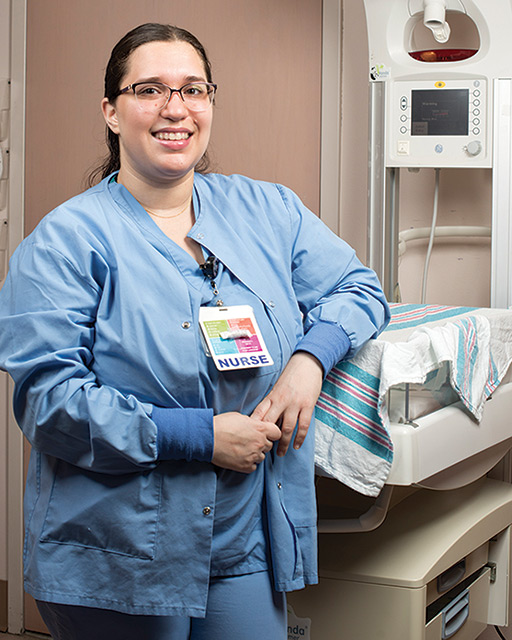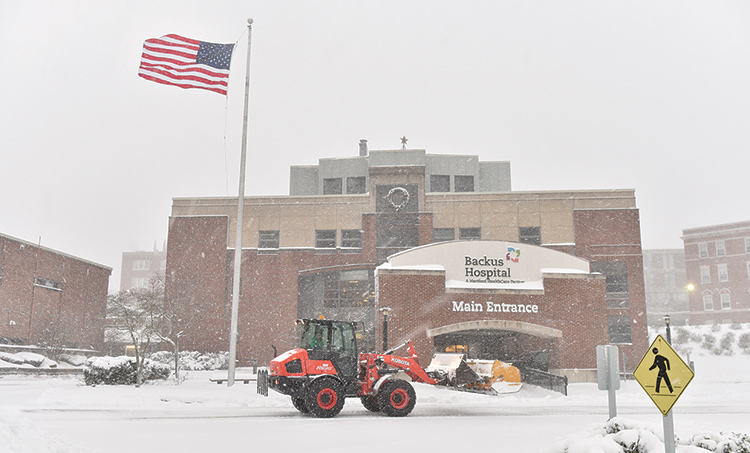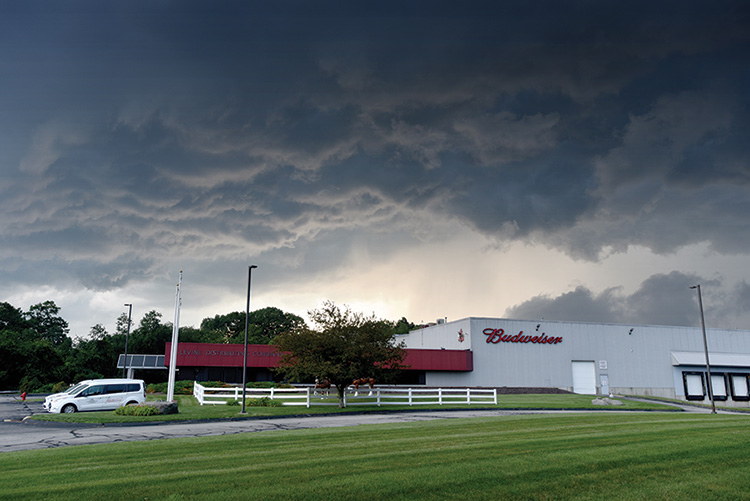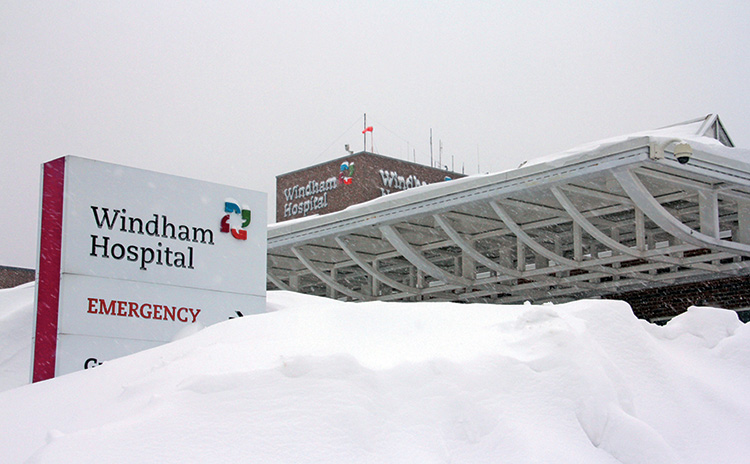‘Unexpectedness’ Makes Night Shifts Fun
By Robin Stanley

Nurse Juliana Gmelch’s day is usually ending just as everyone else’s is beginning.
She is a night nurse on the labor and delivery floor at St. Vincent’s Medical Center, working 7 p.m. to 7 a.m. Life on L&D can be unpredictable at any time but the night, for reasons unknown, seems to be when more women go into labor.
“At night, you can have a bunch of women come in all at once about to have their baby in a few minutes,” Gmelch says. “We can have anywhere from one delivery to eight or nine in one shift.”
Gmelch is often the charge nurse on her shifts, responsible for managing labor and delivery, postpartum and the NICU. She makes assignments throughout the shift and ensures the nurses have everything they need to help the night go smoothly. Occasionally, the night shift is without a secretary so Gmelch also checks in new patients.
When she first started at St. Vincent’s in early 2021, Gmelch worked the day shift.
“The days are a bit different because things are more scheduled,” she says. “There are more scheduled inductions for labor, scheduled C-sections and, since offices are open, there are more triages.”
It is the night shift’s responsibility to prep for the morning’s scheduled C-sections when the patients start arriving around 6:15 a.m. And, while offices are closed during the evening, the night shift still sees a fair share of triage cases.
“Usually, it is women with preeclampsia symptoms such as headache and blurry vision or to rule out labor pain,” she says. “During the night, we get a lot of women thinking they are in labor or pre-term labor.”
What Gmelch enjoys about working the night shift is never quite knowing what to expect, which makes things more interesting. Occasionally, the floor will have a “precipitous delivery,” meaning a woman comes in and the baby is delivered within minutes, with no time for an IV or an epidural.
“On nights, you just have to take what’s handed to you and know what resources you’re going to have for the night,” she says. “The unexpectedness is what makes it fun.”

Weather Buff Watches Storms From Incident Command
By Shawn Mawhiney
Anyone who has worked in healthcare a longtime knows the impact of weather — blizzards, hurricanes and floods can all affect patient care, operations and finances.
In Hartford HealthCare’s footprint across Connecticut, just a few miles can make the difference between getting several feet of snow ora slushy inch, hurricane-force winds or a breeze.
Having worked at Hartford HealthCare for almost 20 years, I’ve seen this firsthand as public information officer in the Incident Command Center. I’ve watched Nor’easters batter Backus Hospital with blizzard conditions while leaving just a dusting at Charlotte Hungerford Hospital, and vice versa.
While some dread these storms, I’ve always been a weather geek, known to binge watch The Weather Channel as they approach. Growing up, I wanted to be a meteorologist, but wasn’t good enough at math so here I am! Luckily, I’ve been able to tap my love of weather in my role as senior director of communications, and gained a reputation as the system’s unofficial meteorologist.
During one hurricane at Backus, my colleague Jeff Evans, who sadly passed away in December, videotaped me standing outside, holding onto a tree branch like my Weather Channel hero Jim Cantore. During just about every snowstorm, I brave the elements, tape measure in hand, to get the snowfall totals. I usually send pictures verifying my measurements to Patrick Turek, senior director of emergency management and security. I’m not sure if it’s helpful or if he just humors me!
When there are questions about a storm’s track,colleagues and members of senior leadership of ten ask for my forecast before making key decisions. Sometimes it’s personal — like will the Red Sox game be rained out? Others are professional — like should we postpone a weekend event?
I am always eager to share my weather expertise, but have had to sweat out a few forecasts because Connecticut’s hilly terrain, valleys and coastline mean just a few miles shift can be dramatic.
My most memorable storms at HHC:
- The Blizzard of 2013 dumped 40 inches of snow in parts of Connecticut, including my home in Colchester.
- Hurricane Irene wreaked havoc across HHC, with power outages and trees down everywhere. HHC facilities teams transformed conference rooms into shelters where colleagues slept to ensure we had enough staff to care for patients.
- In 2011, two months after Hurricane Irene,we were hit by a freak snowstorm before Halloween. I drove from Backus where there was not even an inch of snow to Colchester, only 15 miles up the road, where there was almost a foot. It got worse farther north and west. Hartford and Northwest regions saw more than 20 inches in some locations. Because of downed trees and power lines, Connecticut declared a state of emergency.
- Superstorm Sandy snuck up on us. While it only bordered on a strong tropical storm/weak hurricane, the angle at which it hit us resulted in massive storm surge and wind. A huge pine tree came down within a foot of my house, although I didn’t know it until coming home after more than 24 hours in the Backus Incident Command Center.
- In recent years, there were two hyper local weather events impacting only eastern Connecticut. On Sept. 18, 2021, an isolated supercell pounded Backus with more than 6 inches of rain in just a couple hours, resulting in a flood in the front parking lot that damaged more than 40 cars. A band of snow sitting over eastern Connecticut for hours resulted in upto 30 inches in Norwich, with just a few inches elsewhere. This storm was so isolated I can’t even find it online.





